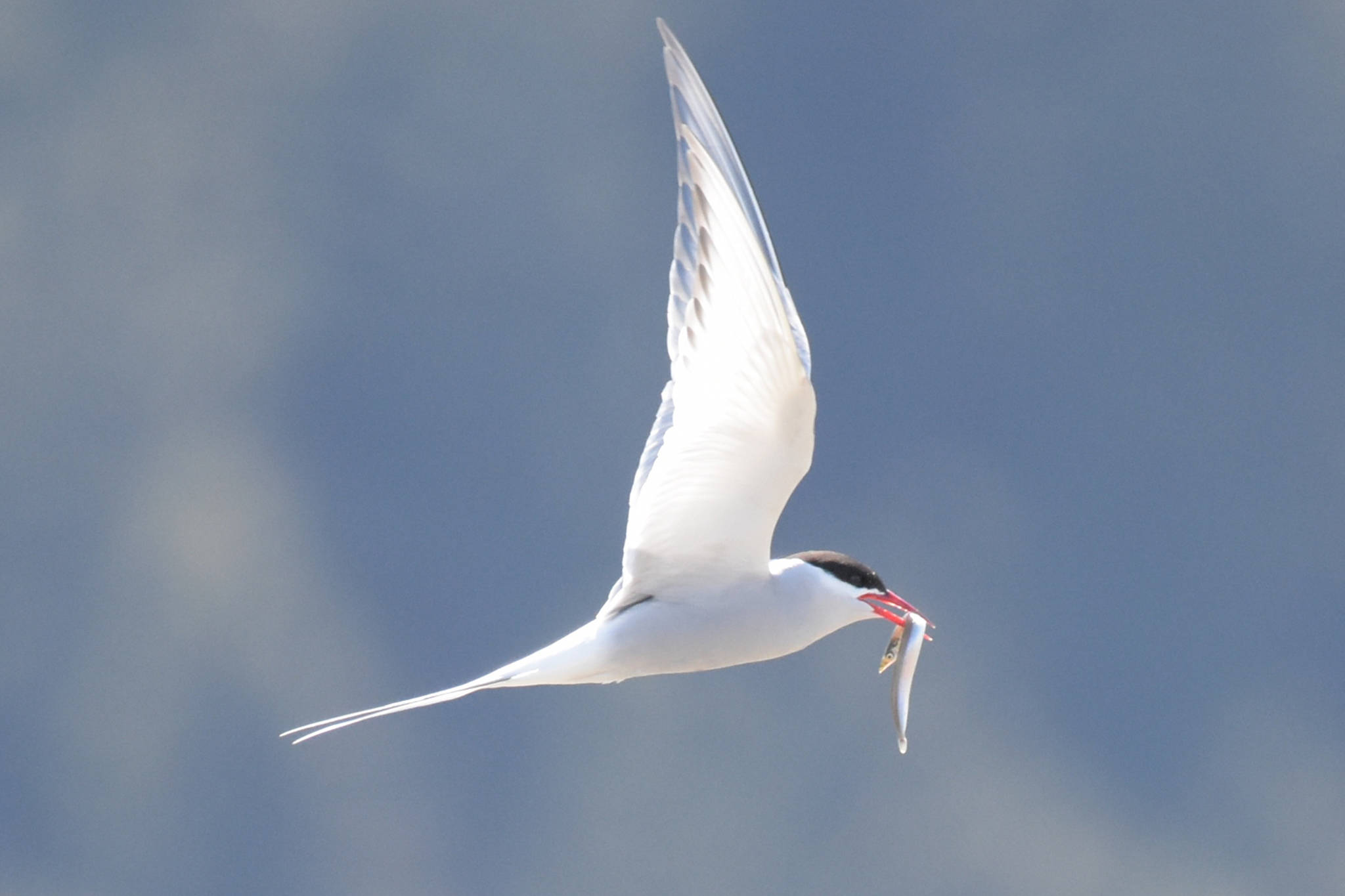Arctic terns in Juneau have met odd ends for two years running, and they’ve just returned for another season.
Two years ago, several nests of eggs laid by the globe-trotting seabirds were ravaged by a wolf. Last year’s unexpectedly perished birds were notable because their bodies weren’t eaten, said Gwen Baluss, wildlife technician for U.S. Forest Service and Audubon Society member.
“Some adults and young birds were found dead,” Baluss said in a phone interview. “What was unusual is there were several dead at once and had not been scavenged. That was quite strange.”
[Arctic tern numbers seem to be declining]
Baluss said tests revealed the same toxin that causes paralytic shellfish poisoning in people was found in the birds, and it’s likely sand lances, which are a source of food for terns, were the source of the poisoning.
“It has been recorded in the literature of Arctic terns in the Atlantic coast,” Baluss said. “It wasn’t completely out of the blue.”
But it hadn’t been noticed before in Juneau.
“It was concerning,” Baluss said. “It may be normal to have some die of that, and we just don’t know about it yet.”
Despite those deaths, Baluss said last year was an above-average one in terms of young bird production for Juneau’s nesting colonies. She said estimates put the number of young birds at 10.
Arctic terns, which have one of the longest migrations in the world and spend summer months in Juneau, are back near the Mendenhall Glacier, to set up nests and potentially add to the flock. Baluss said there are reports of about 40 terns near Photo Point.
“They’re coming back and they’ve been touching down and checking out places where they’ve nested in the past,” Baluss said.
Arctic terns can live up to and past 30 years of age, Baluss said, so the area may be very familiar to some of the birds. Last year, about 40-50 adults occupied the lakeshore, which Baluss said is slightly lower than the 17-year average of 70 terns.
Whether this year will add to that total is unknown, but this season is certain to be different in at least one way from the past few.
The Mendenhall Glacier Visitor Center is Juneau’s most visited site, but with cruise season essentially canceled because of COVID-19, there will be far fewer people in the vicinity of Juneau’s nesting colonies.
However, Baluss said that isn’t expected to have too much of an impact on the terns.
“The Mendenhall Visitor Center does get tons of visitation, but because we have signs and closures and the interpreters watching, we don’t get a ton of disturbance,” Baluss said.
She said a separate nesting colony near the face of the glacier will likely also see fewer visitors.
While there will be fewer out-of-towners, Baluss said signs will be put up and people will be encouraged to keep their dogs on leashes and stay away from the nesting birds.
[Dog may have attacked tern nests]
“We’re still concerned about disturbance,” Baluss said. “We’re still going to want to be vigilant about keeping up with the signs.”
However, Baluss said that doesn’t mean people shouldn’t try to enjoy seeing the birds at a “respectful distance.”
“It’s a really special thing,” Baluss said. “Hopefully people go out and see them.”
• Contact Ben Hohenstatt at (907)308-4895 or bhohenstatt@juneauempire.com. Follow him on Twitter at @BenHohenstatt

